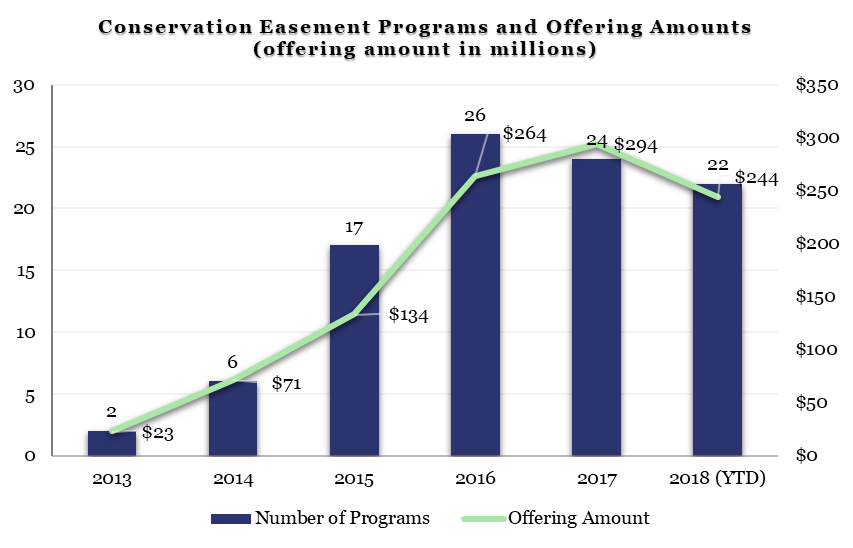Thursday, April 18th, 2019 and is filed under AI Insight News
It’s important to understand the differences between 1031 Exchanges and the newest alternative investment, Opportunity Zone Funds. While Opportunity Funds and 1031 Exchanges both provide tax deferral mechanisms, there are important differences between the two programs. Read the comparison below, then review the education and training resources available to you.
3 key differences
- When investing in an Opportunity Fund, the deferral of capital gains applies to any property held by the investor (i.e., sales of stock, tangible personal property, real property), whereas 1031 Exchanges are now limited solely to gains from disposition of real property.
- 1031 Exchanges require reinvestment of all of the disposition proceeds, whereas Opportunity Funds allow investors to invest only the gains. This provides investors with a degree of liquidity, as they can sell an asset and retain an amount of cash equal to the basis in the disposed-of asset and invest an amount equal to the capital gains without facing an immediate tax bill.
- There is no intermediary requirement for an Opportunity Fund investment. There is also no “likekind” requirement for an Opportunity Fund investment to qualify to its tax deferral benefits, unlike 1031 Exchanges.
Tax deferral regulations
Investors should also keep in mind that gains can be deferred indefinitely through 1031 exchanges. According to proposed regulations, the latest a taxpayer will be able to defer paying taxes on existing capital gains through Opportunity Fund investments is December 31, 2026. Opportunity Funds may provide tax relief for non-qualifying transactions under Section 1031, namely short-term gain property and “blown” I.D. period situations.
Comparison chart
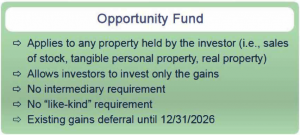
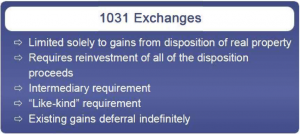
Resources
Content Source: AI Insight CE course, “Introduction to Opportunity Zones”, created in collaboration with Kyla M. Ehrisman, JD, MBA and Alan Lincoln, MBA, CCIM of Mick Law P.C. LLO.
Tuesday, March 26th, 2019 and is filed under AI Insight News
Alternative Mutual Funds experienced significant growth in total assets during and after the Great Recession as investors scrambled for investment options with a lower correlation to the equity/bond markets to protect their investments from increased volatility. Regulators followed the capital flows with heightened suitability concerns to the retail investor focused ‘40 Act structure given the non-traditional strategies and investments Alternative Mutual Funds use. This increases the risk and complexity profile compared to traditional mutual funds.
While there are similarities with Alternative Mutual Funds and traditional mutual funds, as well as other investments, there are key differences to be aware of such as liquidity, risk factors given the complexity of underlying strategies and the level of due diligence needed to remain regulatory compliant.
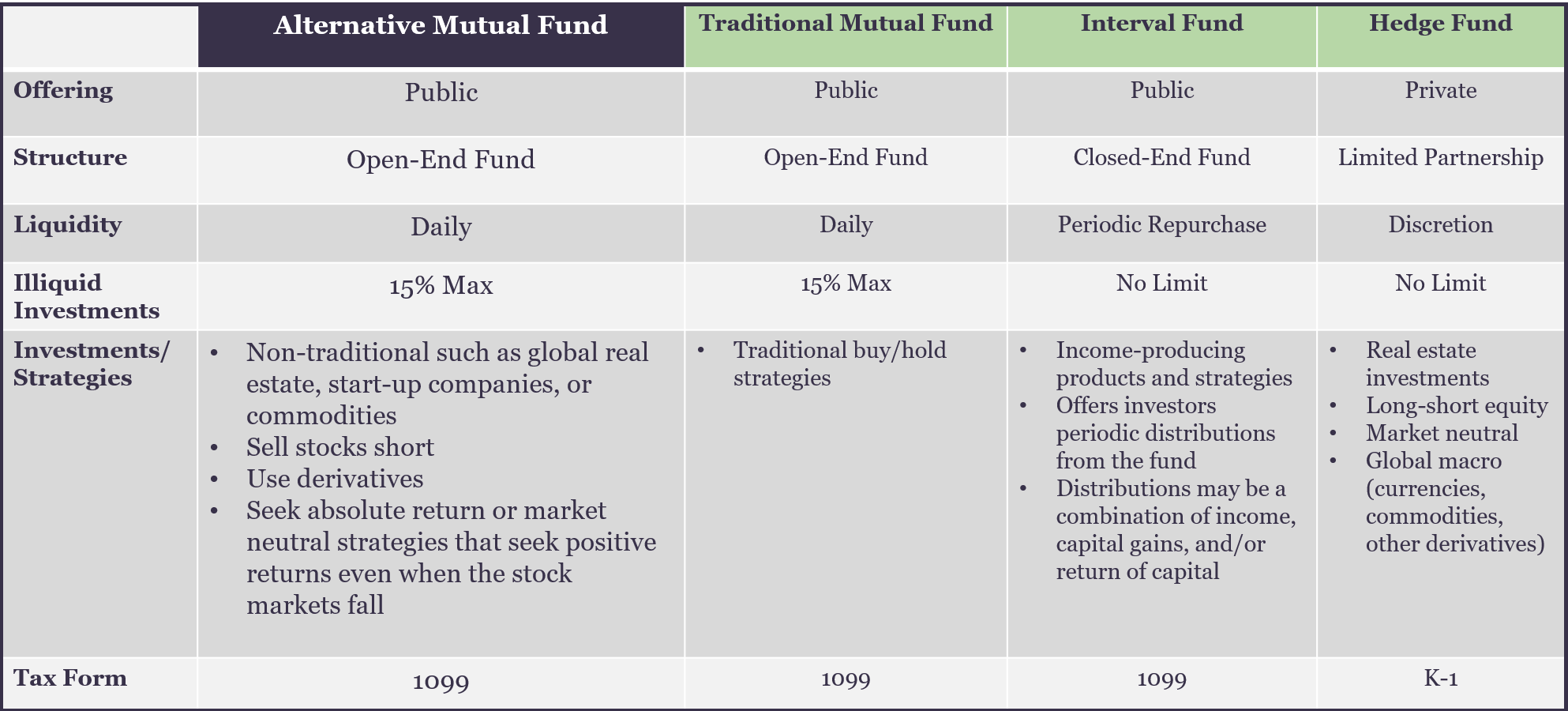

Due Diligence is a Necessary Obligation
FINRA’s e-learning course, Understanding Alternative Mutual Funds calls out, “Regardless of the funds’ regulatory regimes, firms are required to perform adequate due diligence on these products…”. Given the information in the above chart, we’ve determined that additional scrutiny is needed prior to advisors offering Alternative Mutual Funds to clients to make them aware of possible risks and help them understand these complex fund strategies.
AI Insight’s Alternative Mutual Fund Research can help with due diligence based on continued regulatory guidance using easy and efficient support tools to:
- Review independent, unbiased reports addressing the breadth and diversity of alternative mutual funds as well as differences across the underlying strategies.
- Evaluate an aggregation of insightful quantitative and qualitative data including fund company, strategy, portfolio and investment advisor overviews.
- Run side-by-side fund comparisons based on 70+ features, such as strategy, exposure, fees and performance.
Thursday, March 21st, 2019 and is filed under AI Insight News
- The first three Opportunity Zone Funds activated in February, for an aggregate maximum offering amount of $335.0 million.
- Fund size ranged from $35.0 million to $200.0 million.
- Leverage is anticipated around 60% to 70% of the total value for one of the funds, while the other two allow for leverage but have not specified anticipated levels.
- Two of the funds are blind pool funds focused on hospitality and one is focused on a specified mixed-use development project.
- All of the funds include a preferred return component, ranging from 6.0% to 8.0%.
- ON DECK: As of March 20th, there were two Opportunity Zone Funds coming soon, with one focused on multifamily and one on mixed-use development.
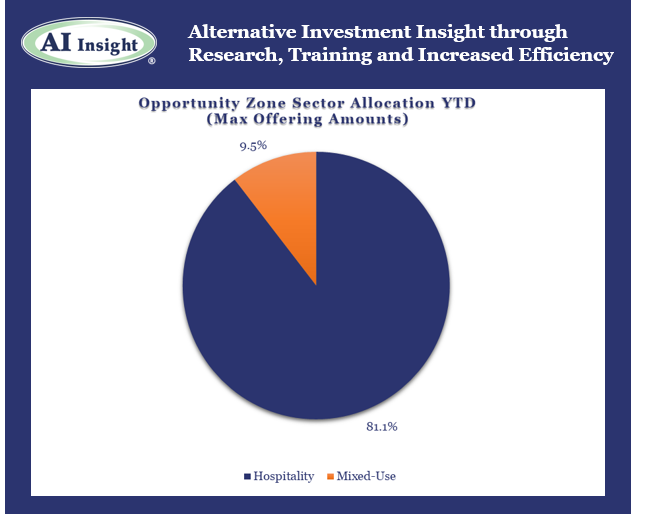
AI Insight recently added Industry Reporting capabilities to the Financial Performance Reporting tool, which includes this and many more insights into key non-traded markets. AI Insight is the only provider of industry-level Private Placement reporting. To inquire about accessing these expansive data reports, contact us directly.
Charts Source: AI Insight. Data as of February 28, 2019, based on programs activated on the AI Insight platform as of this date.
Activated means the program and education module are live on the AI Insight platform. Subscribers can view and download data for the program and access the respective education module.
Thursday, February 21st, 2019 and is filed under AI Insight News
- Two non-1031 real estate programs activated in January for an aggregate maximum offering amount of $48.6 million.
- While the aggregate offering amount in January was roughly half of what it was last January, there was only one larger program seeking capital as opposed to two this year.
- Two sponsors offered programs in January, including one sponsor new to the space.
- Programs activated in January focused on hospitality and self-storage.
- ON DECK: As of February 11th, there were three non-1031 real estate program coming soon. Two of these are focused on healthcare and retail, with one diversified, opportunistic fund.
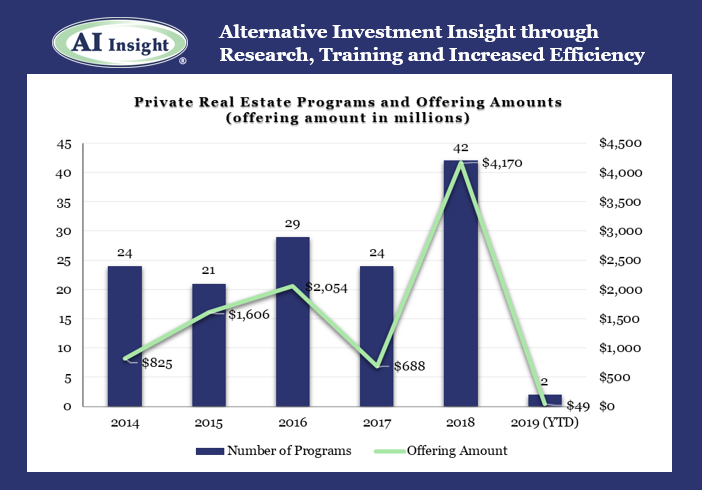
AI Insight is introducing Industry Reporting late in the first quarter of 2019, which will include this and many more insights into key non-traded markets, including the new Opportunity Zone Funds. To inquire about accessing these expansive data reports, contact us directly.
Charts Source: AI Insight. Data as of January 31, 2019, based on programs activated on the AI Insight platform as of this date.
Activated means the program and education module are live on the AI Insight platform. Subscribers can view and download data for the program and access the respective education module.
Wednesday, February 13th, 2019 and is filed under AI Insight News
FINRA recently issued its 2019 Risk Monitoring and Examination Priorities Letter along with its 2018 Examinations Finding Report. These reports highlight the continued focus on client suitability. Watch Video
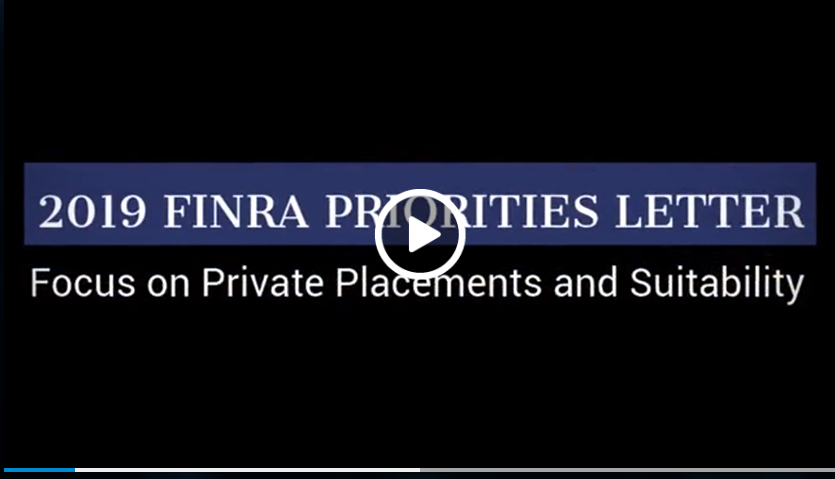
Thursday, February 7th, 2019 and is filed under AI Insight News
Some financial firms have raised questions about the need for conducting additional research on alternative mutual funds given their complex structure compared to traditional mutual funds. See below for supporting regulatory detail to help differentiate the need for additional due diligence on alternative mutual funds.
In 2013, FINRA issued an alert identifying alternative mutual funds as having unique characteristics and risks separate from their traditional counterparts (stock and bond funds). The alert, Alternative Funds Are Not Your Typical Mutual Funds, focuses on defining liquid alternatives, how they compare to hedge funds, and what all investors need to be aware of.
Liquidity Risk Management proposed on September 22, 2015. The proposal included a comprehensive package of rule reforms designed to enhance effective liquidity risk management by open-end funds, including mutual funds and exchange-traded funds (ETFs). Under the proposed reforms, mutual funds and ETFs would be required to implement liquidity risk management programs and enhance disclosure regarding fund liquidity and redemption practices. The proposal is designed to better ensure investors can redeem their shares and receive their assets in a timely manner.
Derivatives Rule proposed on December 11, 2015. The rule is designed to enhance the regulation of the use of derivatives by registered investment companies, including mutual funds, exchange-traded funds (ETFs) and closed-end funds, as well as business development companies. The proposed rule would limit funds’ use of derivatives and require them to put risk management measures in place which would result in better investor protections.
- The fate of the Derivatives Rule, which would impose aggregate exposure limits on a fund’s net assets, has become uncertain. The rule was proposed under the previous administration and former SEC Chair Mary Jo White. However, under the spring 2018 regulatory agenda for the division of investment management, it was recommended that the Commission revisit the rule. The SEC did ultimately adopt the Liquidity Risk Management Program Rule, in which funds will have to comply (generally speaking) with the new requirements imposed by June 2019. The rule requires each registered open-end management investment company, including open-end ETFs, but not including money market funds, to establish a written liquidity risk management program. The program requires each fund to classify the liquidity of its portfolio investments based on the number of days within which it determined that it reasonably expects an investment would be convertible to cash.
- The rule also requires funds to review its portfolio investments’ classifications at least monthly. Also, funds must determine their “highly liquid investment minimum,” or the minimum amount of the fund’s net assets it invests in highly liquid investments to increase the likelihood that it will meet redemption requests without significantly impacting its NAV. Given the nature of alternative mutual funds and its use of derivatives, investors should be aware of the associated risks fund managers face in complying with the rules and incorporate an understanding of the systems and programs in place as part of fund due diligence.
In 2017, FINRA took further steps to identify alternative mutual funds as a unique product set by introducing an e-learning course titled Understanding Alternative Mutual Funds. The course explains the unique characteristics and associated risks of these investments, and presents scenarios designed to further the understanding of the complexities and the importance of performing a thorough suitability analysis.
Additional Resources:
Thursday, February 7th, 2019 and is filed under AI Insight News
More advisors are working with alternatives as they become more accessible to average investors through the recent evolution of Alternative Mutual Funds. Cerulli’s recent report, “U.S. Alternative Investments 2018: Accessing Evolving Alternative Platforms“, focuses on trends in the U.S. alternative asset market. It concludes that more than 37% of advisors are working with alternative mutual funds.
However, other data tells us that advisors may not have the resources they need to research and apply alternative mutual funds in their practices. According to Investment News, about 67% of advisors say lack of understanding is one of the main reasons why they don’t use alternatives more frequently in their asset allocation models.
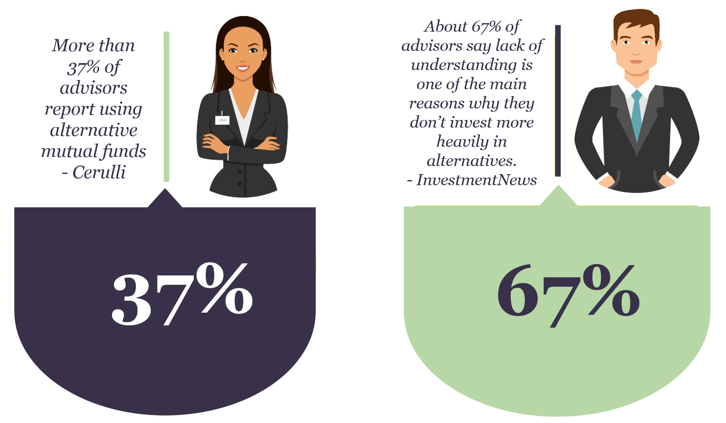
Get started now with 3 easy steps to help advisors understand the complexities of alternative mutual funds and help them remain regulatory-compliant.
- First, take 3 minutes to read this Q&A and gain a basic understanding of how Alternative Mutual Funds differ from traditional funds, learn how to address regulatory requirements and view our extensive list of resources.
- Next, take the CE course, “Introduction to Alternative Mutual Funds“ to understand key aspects, benefits and risks of these complex products.
- Finally, request a demo customized to your business needs to take a closer look at how an alternative-centered focus on research on various strategies including managed futures, long-short, market neutral and alternative allocation can help create efficiencies in your business.
Friday, February 1st, 2019 and is filed under AI Insight News
FINRA recently issued its 2019 Risk Monitoring and Examination Priorities Letter along with its 2018 Examinations Finding Report. These reports highlight, among other things, the continued focus on client suitability and overconcentration in non-traded investments, and the need for reasonable due diligence for private placements that is well documented.
Specifically, the 2019 Priorities Letter states,
“As always, suitability will remain one of FINRA’s top priorities. This year, some of the specific areas on which we may focus include: (1) deficient quantitative suitability determinations or related supervisory controls; (2) overconcentration in illiquid securities, such as variable annuities, non-traded alternative investments and securities sold through private placements; and (3) recommendations to purchase share classes that are not in line with the customer’s investment time horizon or hold for a period that is inconsistent with the security’s performance characteristics…”
The 2018 Findings Report stated,
“FINRA has observed instances where some firms that have suitability obligations under FINRA Rule 2111 (Suitability) failed to conduct reasonable diligence on private placements and failed to meet their supervisory requirements under FINRA Rule 3110 (Supervision). FINRA Regulatory Notice 10-22 describes the circumstances under which firms have an obligation to conduct a “reasonable investigation” by evaluating “the issuer and its management; the business prospects of the issuer; the assets held by or to be acquired by the issuer; the claims being made; and the intended use of proceeds of the offering.”
Additionally, in the 2018 Findings Report, FINRA outlines the characteristics of firms that have performed reasonable due diligence, and reminds firms conducting due diligence of their obligation to document both the “process and results” of such reasonable due diligence analysis.
Key Takeaways
- Carefully review and understand the specific suitability requirements for each non-traded or private placement program utilized, and ensure that your firm has a documented process in place to monitor the compliance with suitability requirements.
- Perform a “reasonable investigation” of all complex products, focusing on the specific factors outlined by FINRA in the 2018 Findings Report. For further guidance on what constitutes a “reasonable investigation,” review FINRA Regulatory Notice 10-22.
- Document the due diligence process – remember, if it isn’t documented, it was never done.
- If utilizing third party due diligence vendors, ensure that your firm independently investigates any red flags identified, and document your firm’s investigation and findings.
Let AI Insight help you stay Compliant
- Unbiased education: Access product-specific training on the features, risks and suitability for hundreds of offerings.
- Conduct research: Create efficiencies in your due diligence review process using our robust database to source new products as well as analyze and compare hundreds of alternative investment programs, including non-traded programs, private placements, and alternative mutual funds.
- Compliance documentation: Demonstrate what you’re doing to support your firm’s regulatory requirements in a transparent way. AI Insight captures all of the activity your firm members complete within the platform including training modules, offering document reviews and research conducted.
Resources
Tuesday, January 8th, 2019 and is filed under AI Insight News
- The 1031 industry ramped up significantly in 2018, posting a record year in terms of the number of offerings and offering amounts. The industry appears to be keeping a similar pace in 2019, with two programs activated in January and three coming soon, as of January 8, 2019.
- There were 5 new 1031 programs activated on the AI Insight platform in December for a combined $167 million in total offering amount, with 85 activated in FY 2018 for a total offering amount of $2.6 billion.
- Multifamily was the top sector, at 57.3% of max offering amount, followed by Healthcare and Net Lease, at 12.6% and 11.7%, respectively.
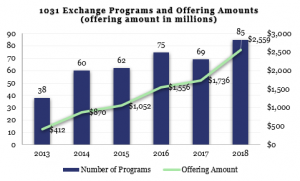
AI Insight is introducing Industry Reporting in the first quarter of 2019, which will include this and many more insights into key non-traded markets.
View data insights for non-traded REITs, BDCs, Closed-End Interval Funds, Private Placements and Alternative Mutual Funds. Keep watch on trends using our extensive review of available programs providing key financial statistics for each industry and program, such as distributions and coverage ratios, sector allocations, capital raise, leverage ratios and more.
To inquire about accessing these expansive data reports, please contact us directly.
Wednesday, January 2nd, 2019 and is filed under AI Insight News
- Seven conservation easement programs activated on the AI Insight platform in November for a total of $78.2 million in aggregate offering amount for the month.
- The category is positioned to meet or exceed its record in 2016, with four programs coming soon for a total of $35.5 million in aggregate offering amount.
Additional Resources
Coming soon:
- AI Insight is introducing Industry Reporting in the first quarter of 2019, which will include this data and many more insights into key non-traded markets. To inquire about accessing these expansive data reports, please contact us directly.
- AI Insight CE Course – Conservation Easements. View the course catalog










